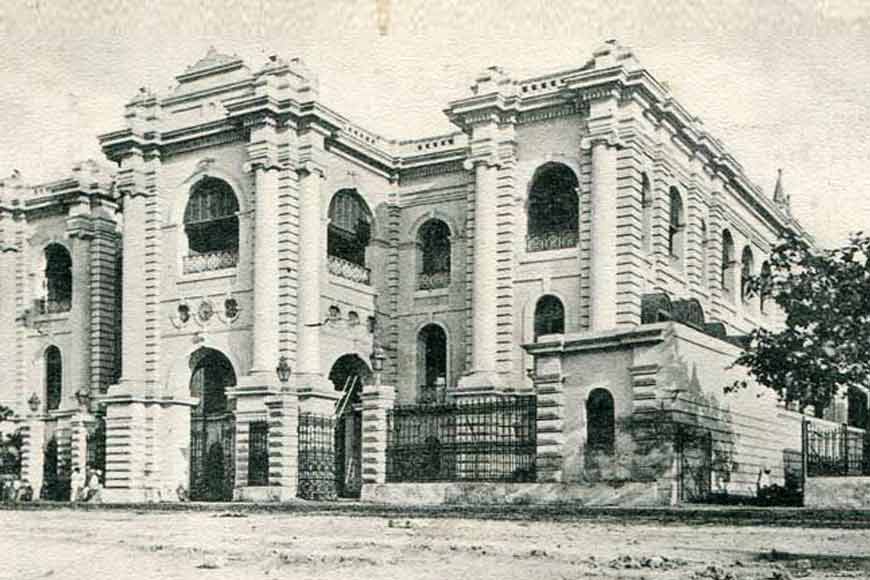Bank of Calcutta, oldest bank of Asia never failed!

Bank frauds and bank crises in India is nothing new. It has been an integral part of Indian financial history and in 1913, John Maynard Keynes after surveying the state of banking in the country, wrote in Indian Currency and Finance, “In a country so dangerous for banking as India, (it) should be conducted on the safest possible principles.” The first bank of Asia, was established in our beloved city Kolkata by the British and thankfully that was among the very few banks that did not fail. It was called the Bank of Calcutta and often considered to be a precursor to the present State Bank of India. Founded on 2 June 1806, mainly to fund General Wellesley’s wars against Tipu Sultan and the Marathas, it was the first bank of India and Asia. Later it was renamed Bank of Bengal on 2 January 1809.
The bank opened branches not just in Kolkata, but faraway places that fell under the British colonial rule, including Rangoon in 1861, Patna in 1862 and Mirzapur and Benares in the same year. When it became known that the bank intended to open a branch at Dhaka, negotiations began that resulted in forming Bank of Bengal from Bank of Calcutta in 1862 amalgamating the existing Dhaka Bank.
The Bank of Calcutta, and the two other Presidency banks, the Bank of Bombay and Bank of Madras finally amalgamated on 27 January 1921 and the reorganized banking entity assumed the name as Imperial Bank of India and after independence, in 1955, the Reserve Bank of India gained control in the Imperial Bank of India, that was renamed on 30 April 1955 as the State Bank of India.
But banking scams in India continued in India since long. Take for example the Presidency Bank of Bombay (PBB). The bank had been started by the East India Company in 1840. It was stable and run prudently till the mid-1860s. This was the period when the British started relying extensively on Bombay cotton markets, as supplies from the US had declined due to the civil war. Thus, lots of cotton companies and banks began to spring up in Bombay catering to a booming demand for capital. It is in this environment that PBB began to issue loans recklessly against shares of private companies and even on just personal security. Then, as the civil war ended, the euphoria in the Indian cotton market turned to panic. The hitherto stable bank came to a swift close. A new Bank of Bombay was established immediately in 1868—financial institutions were, of course, central to the colonial project.
Even before PBB, there were several bank failures in Calcutta. Several banking organizations mushroomed in the early 18th century, as economic activity concentrated in Calcutta. However, again, the same problems surfaced—overextended balance sheets, accounting fraud etc. At the time bankers in Calcutta blamed the fact that banks had unlimited liability. Subsequently, in 1861, British authorities allowed banks to have limited liability, only for the PBB collapse to show that accounting regulations and reforms can only do so much for prudent banking.
1905 was another period of euphoria in Indian banking, this time due to the Swadeshi movement. Arising out of the political foment unleashed by the partition of Bengal, the movement called for Swadeshi banks to fund Swadeshi enterprises. By 1913, there were 451 banking companies (accoring to Bakhtiar Dadabhoy's Barons of Banking). Following runs, prominent banks such as Indian Specie Bank and People’s Bank of India collapsed. The case of Indian Specie Bank is interesting—it had forwarded large loans to a prominent pearl merchant. When the merchant’s business collapsed, so did the bank. In December 1913 one newspaper, The Colonist, said that if the bank’s management had released balance sheets, the fraud could have been detected well in advance of the collapse. A refrain that is all too common to this day.
Interestingly, most of the banking failures in the 1910s took place in Punjab. In 1913-14, out of 54 closed banks, 28 were from Punjab and 11 from Bombay. The location of failures then shifted significantly towards southern India and West Bengal. The period of 1913-66 sees nearly 1800 banks failing—25% in Kerala, 21% in West Bengal and 20% in Madras. However, The Bank of Bengal always stood ground and never failed.










